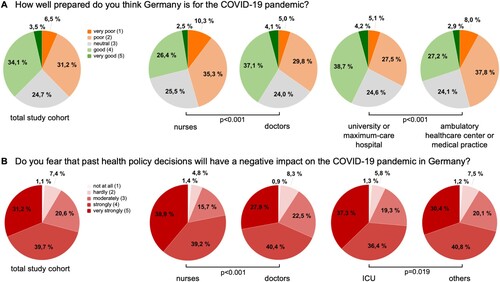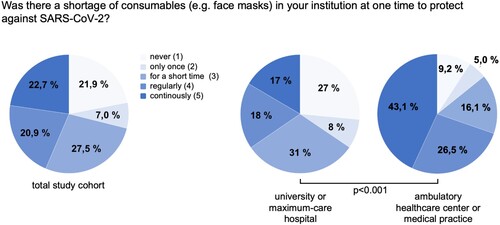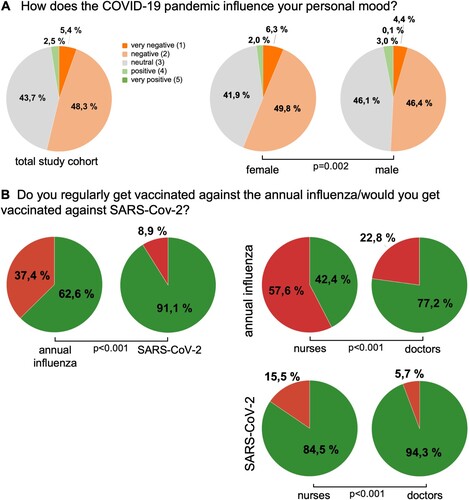Figures & data
Table 1. Characteristics of study population.
Table 2. General perception of the SARS-CoV-2 pandemic among medical professionals in Germany.
Figure 1. Preparations of Germany for the COVID-19 pandemic. (A) The nursing staff state that Germany is significantly worse prepared compared to doctors (p < 0.001). Germany’s preventive measures are rated significantly better at university and maximum-care hospitals compared to ambulatory healthcare centers and medical practices (p < 0.001). (B) Compared to doctors, nurses fear a more negative impact of past healthcare policy decisions on the COVID-19 pandemic in Germany (p < 0.001). Participants working on an ICU assume a more negative impact compared to participants from other working environments (p = 0.019).

Table 3. Evaluation of work-related aspects within the German health care system during the COVID-19 pandemic.
Figure 2. Shortage of medial protective equipment. According to the statement of medical professionals in Germany, shortage of medical protective equipment is significantly more common in ambulatory healthcare centres/medical practices compared to university hospitals (p < 0.001).

Figure 3. Personal impact of the COVID-19 pandemic. (A) The personal mood of female participants is more negatively influenced by the COVID-19 pandemic compared to males. (B) The willingness to be vaccinated against SARS-CoV-2 – once a clinically proven vaccine became available – is significantly higher compared to annual influence vaccination rates (p < 0.001). Doctors show a significantly higher willingness to be vaccinated regarding the annual influenza (p < 0.001) as well as SARS-CoV2 (p < 0.001) when compared to participants from the nursing sector.

